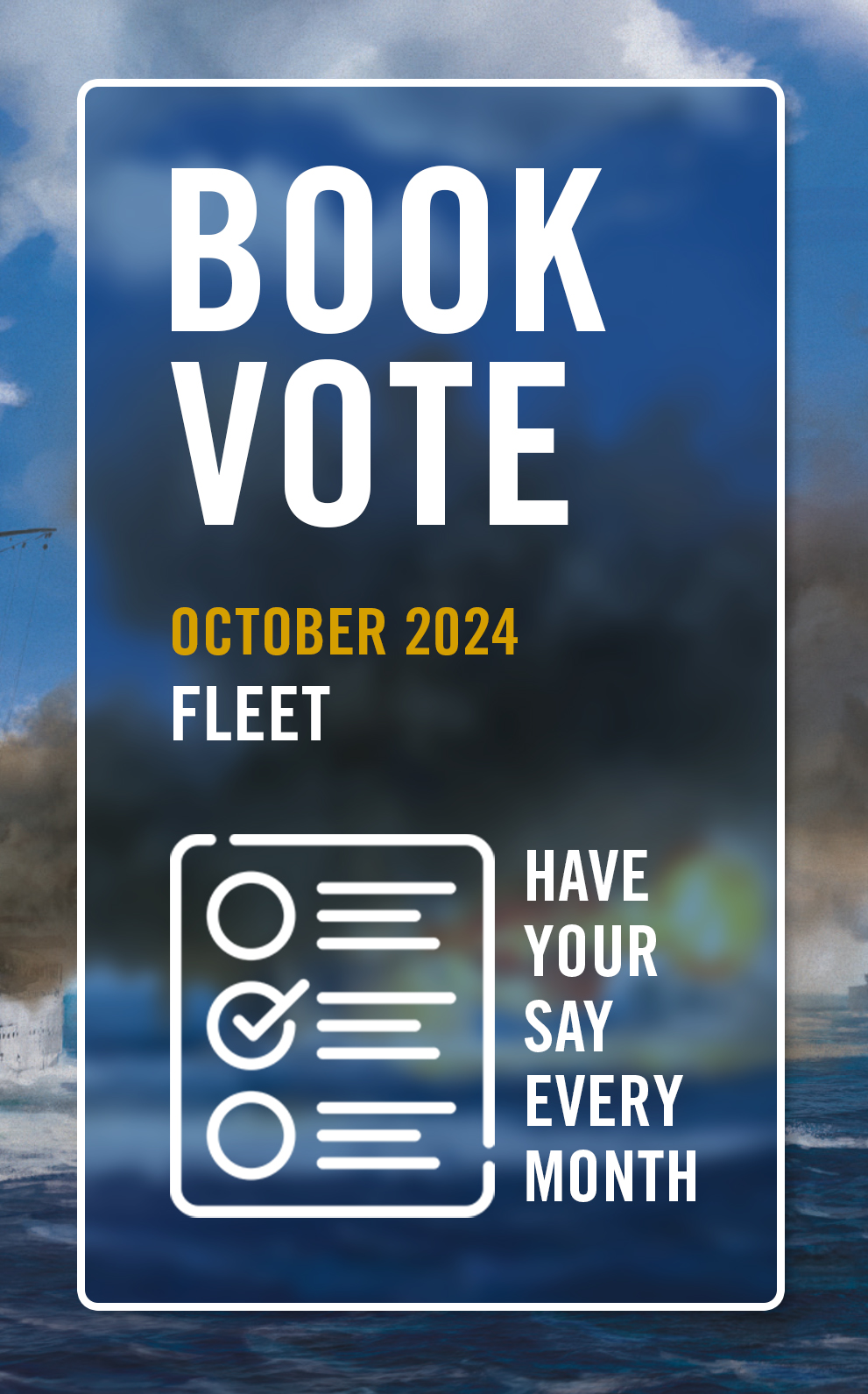
This month's book vote sees five Fleet titles battling for your support. Read the full descriptions and have your say by visiting the Book Vote page. Plus, check out the results of last month's Campaign vote.
Royal Navy China Station 1902–33: Gunboats on the far side of the world
Allied Fleet at Gallipoli 1915–16: The battle for the Dardanelles
Kriegsmarine Task Force Norway 1940: Germany’s biggest amphibious fleet
Iwo Jima Invasion Fleet 1945: The US armada in the bloodiest island battle
NATO Atlantic Command 1980–91: The height of Cold War naval power
Royal Navy China Station 1902–33: Gunboats on the far side of the world
Since the aftermath of the Second Opium War, the Royal Navy’s China Station had been the furthest naval outpost of empire, and in the 20th century was its third-largest fleet. Operating from Singapore, Hong Kong, and Weihaiwei, the China Station’s area of responsibility included Chinese waters and navigable rivers, the western Pacific, and around the Dutch East Indies. This book would explore the fleet’s roles, activities and strength during the tumultuous early 20th century – from the signing of the Anglo-Japanese Alliance to Japan’s withdrawal from the League of Nations – including river gunboat operations, East Asian operations against Germany in World War I, the outbreak of the Chinese Civil War, and the start of Japanese aggression in China.
Allied Fleet at Gallipoli 1915–16: The battle for the Dardanelles
Far from the North Sea battleground where Britain and Germany’s latest dreadnoughts faced each other, the Dardanelles saw World War I’s other significant battleship fleet go into action, this time against the mines and batteries of Ottoman Turkey, in an attempt to force the strait. A joint force of French, British, Australian and Russian warships, it included a handful of modern capital ships, but relied for most of its big-gun firepower on less precious pre-dreadnought battleships. This book would cover the constitution of the fleet, its command and organization, and its actions in the campaign, which saw heavy losses – particularly to mines.
Kriegsmarine Task Force Norway 1940: Germany’s biggest amphibious fleet
The invasion of Norway required the Kriegsmarine to conduct a major amphibious landing, for the only time in World War II. To do so it had to commit a large part of its surface fleet, a fleet which was not optimised for such tasks. This book examines the naval side of the Norway operation, how it was planned, organized, and fought, and how the losses the Kriegsmarine suffered hampered its operations for the rest of the fleet’s life.
Iwo Jima Invasion Fleet 1945: The US armada in the bloodiest island battle
By the last months of the war, the US Navy had significant experience in conducting amphibious landings in the Pacific, and was not only growing ever more powerful, but had honed its doctrine for conducting the assaults. It was however facing ever-fiercer opposition, and more heavily fortified defences. This book would explore the US Navy’s ultimate techniques for Pacific War amphibious assault, including fire control, communication, and sea-air-land coordination, and how they played out in the most notoriously bloody battle of the campaign.
NATO Atlantic Command 1980–91: The height of Cold War naval power
NATO’s Allied Command Atlantic was the alliance’s primary maritime command structure, charged with securing Atlantic sea lanes in the event of war with the Warsaw Pact, and thus NATO’s ability to resupply Western Europe. The 1980s saw the emergence of a more aggressive approach, led by the United States’ new Maritime Strategy of 1984, which prioritised investment in longer-range offensive capabilities and sealift capability, and was the rationale for the 600-Ship Navy. NATO would carry the fight to the Soviet Union, and during the 1980s the alliance’s fleets upped the tempo of their exercises, staging the huge Northern Wedding and Ocean Safari exercises annually. This book would explore the strategy, capabilities and plans for NATO’s naval operations during these tense last years of the Cold War.
Last month, we asked what you would like to see published in our Campaign series. Thank you to everyone who voted and provided feedback. Here are the results:
Cartagena 1741: Britain’s Attempt to end Spain’s South American Monopoly - 25%
An Loc 1972: Halting the North Vietnamese March towards Saigon - 10%
Narva 1944: German and Soviet War in the Baltics - 24%
Athens 1944: Britain’s Involvement in the Greek Civil War - 23%
Cold Harbor 1864: The Last Engagement of Grant’s Overland Campaign - 13%

Comments
You must be logged in to comment on this post. Click here to log in.
Submit your comment